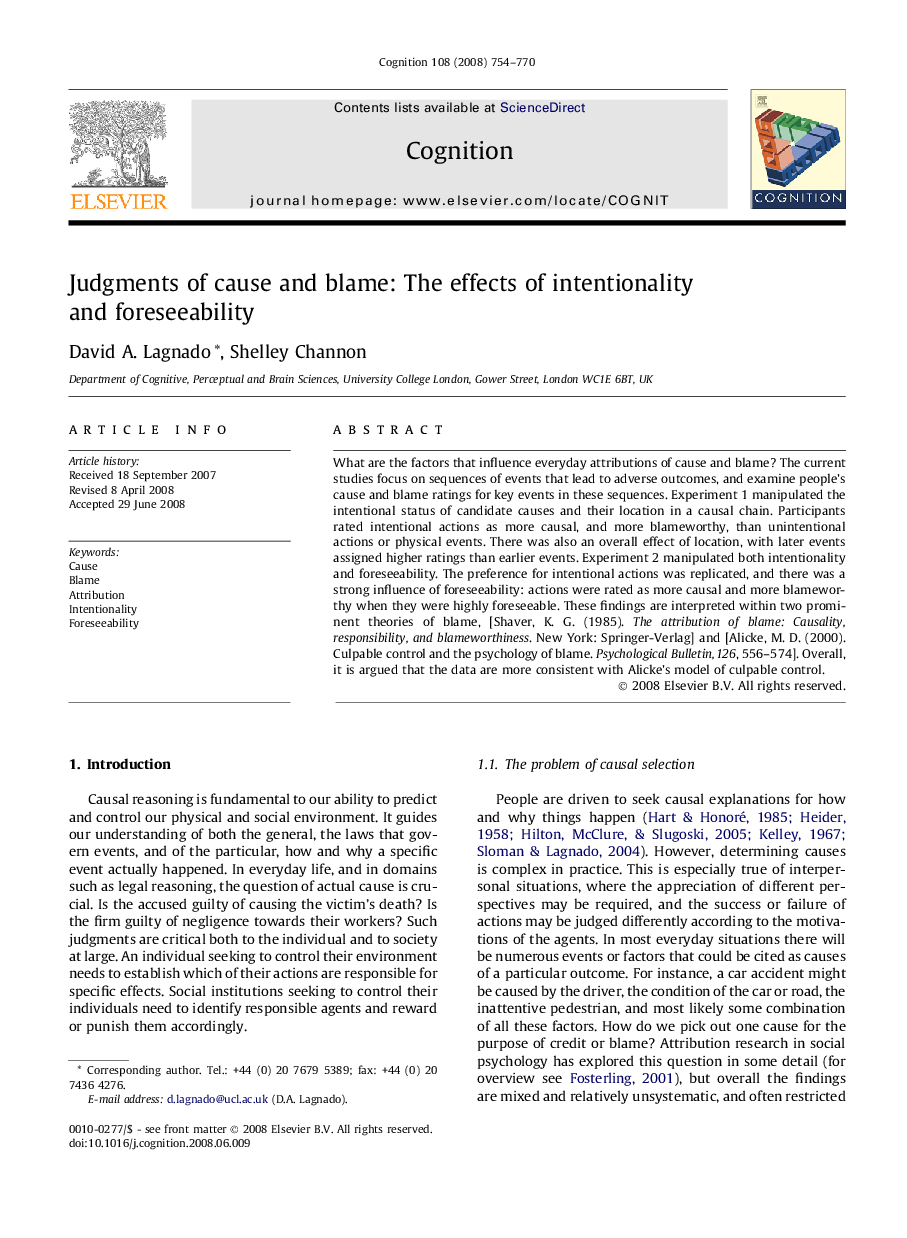| کد مقاله | کد نشریه | سال انتشار | مقاله انگلیسی | نسخه تمام متن |
|---|---|---|---|---|
| 927315 | 921966 | 2008 | 17 صفحه PDF | دانلود رایگان |

What are the factors that influence everyday attributions of cause and blame? The current studies focus on sequences of events that lead to adverse outcomes, and examine people’s cause and blame ratings for key events in these sequences. Experiment 1 manipulated the intentional status of candidate causes and their location in a causal chain. Participants rated intentional actions as more causal, and more blameworthy, than unintentional actions or physical events. There was also an overall effect of location, with later events assigned higher ratings than earlier events. Experiment 2 manipulated both intentionality and foreseeability. The preference for intentional actions was replicated, and there was a strong influence of foreseeability: actions were rated as more causal and more blameworthy when they were highly foreseeable. These findings are interpreted within two prominent theories of blame, [Shaver, K. G. (1985). The attribution of blame: Causality, responsibility, and blameworthiness. New York: Springer-Verlag] and [Alicke, M. D. (2000). Culpable control and the psychology of blame. Psychological Bulletin, 126, 556–574]. Overall, it is argued that the data are more consistent with Alicke’s model of culpable control.
Journal: Cognition - Volume 108, Issue 3, September 2008, Pages 754–770